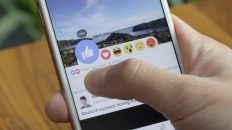Contrary to popular belief, social media marketing is not just about getting the likes and the shares. A lot of digital marketers and SEO specialists indulge in practices that fall under the ‘dark social’ category to get more traffic to their clients’ websites. So what does dark social really mean? Let’s take a quick look.
What is Dark Social?
Despite how fishy it all sounds, it isn’t anything dubious or scary. ‘Dark Social’ is basically a term coined by one of The Atlantic’s senior editors, Alexis C. Madrigal to describe website traffic and social media interactions that are difficult to track and measure through traditional analytics. Often referred to as dark social traffic, this kind of website traffic doesn’t seem to have any specific source. This is mostly the result of content and links being shared through emails, text messages and DMs (Direct Messages).
The Most Common Sources of Dark Social Traffic
- Native Mobile Apps – A lot of people use native apps such as Facebook, Instagram, etc. to copy-paste and share a great deal of links. Surveys reveal that these copy and paste shares represent as many as 80% of all shares.
- Messaging Apps – The rapid growth of instant messaging apps such as WhatsApp, Facebook Messenger, etc. has also given rise to dark social interactions. Reportedly, there are over a billion people around the globe who use WhatsApp to talk about and share information on various brands.
How Does it Affect a Business
The thing about dark social interactions is that although they are difficult to track, they more often than not lead to conversions. Say a friend of yours shares a link with you through Facebook or WhatsApp, you are will most likely click on it, won’t you? Hence, one can say that dark social traffic is just as valuable to a brand as the traceable traffic. After all, it is word-of-mouth between people who most likely know each other.
Ways to Find Out How Much Dark Social Traffic you Get
-
Make use of link shorteners. This makes it possible for you to get a slightly better understanding of the clicks that your tracked links receive.
Upgrade your share buttons by using tools that allow you to use inline or sticky share buttons. It will be easier for you to track these links even when people share your content through emails, text messages or instant messaging apps.
Do a quick audit of all your direct traffic in whatever analytics platform that you use. Chances are that most of the long links listed under direct traffic were not typed in manually and hence, they may have actually come from dark social.
To conclude…
There really isn’t much that you can do about the dark social traffic you get. However, it is expected to grow even further. Several industry reports suggest that dark social is bound to impact social media marketing plans in 2019. If as a brand or a digital media professional, you plan on using it, it is advisable to first know all the basics and understand how to track it.





